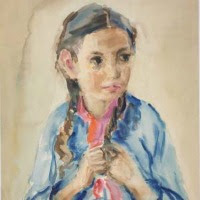Victor, along with the rest of the hand picked members of the Ghost Army, had been chosen because of their artistic talents. After basic training, the members of the 603rd had developed and tested inflatable guns, planes, tanks, and vehicles as well as figuring out how to disguise bomber planes and coastal defense to fool the enemy. Now, along with the 3132 Signal Service Company Special, they would get to test their deceptions for real.
After the successful Normandy invasion, Vic and his platoon arrived on Omaha Beach in France, along with their inflatable "equipment" and wasted no time setting up their inflatable howitzers. But would it fool the enemy?
That was the question the Ghost Army asked themselves each time they moved forward. Their job was to fool the enemy into thinking they were a fully armored division ready for battle, when in reality there was nothing but realistic inflatables and finely tuned sound effects imitating every possible sound typical of real division.
As the Ghost Army worked its way through France, Belgium all the way to the Rhine and their longest and greatest deception, readers can use the spy craft tools to try to solve the mystery of Victor's missing sketchbook.
Victor Dowd and the World War II Ghost Army is a novel based on real events and and real people,
When I was a classroom teacher, and even in homeschooling situations, Friday afternoon was always cool down time and the kids were allowed to play strategy games. This would be an ideal addition to the other games.
Here's a question you can give the kids to think about while they read Victor Dowd and the World War II Ghost Army:
If you were a member of the Ghost Army, which of your creative skills would you utilize to deceive the German troops?
Personally, I'm not very artistic, but I'm a good problem solver, so the only thing I would be good for are idea about how to go about deceiving the enemy.
Spy on History: Victor Dowd and the World War II Ghost Army is a wonderful and fun way to learn about the important role the Ghost Army played in helping the Allies win the war.
This book is recommended for readers age 10+
This book was provided by the publisher, Workman Publishing
















